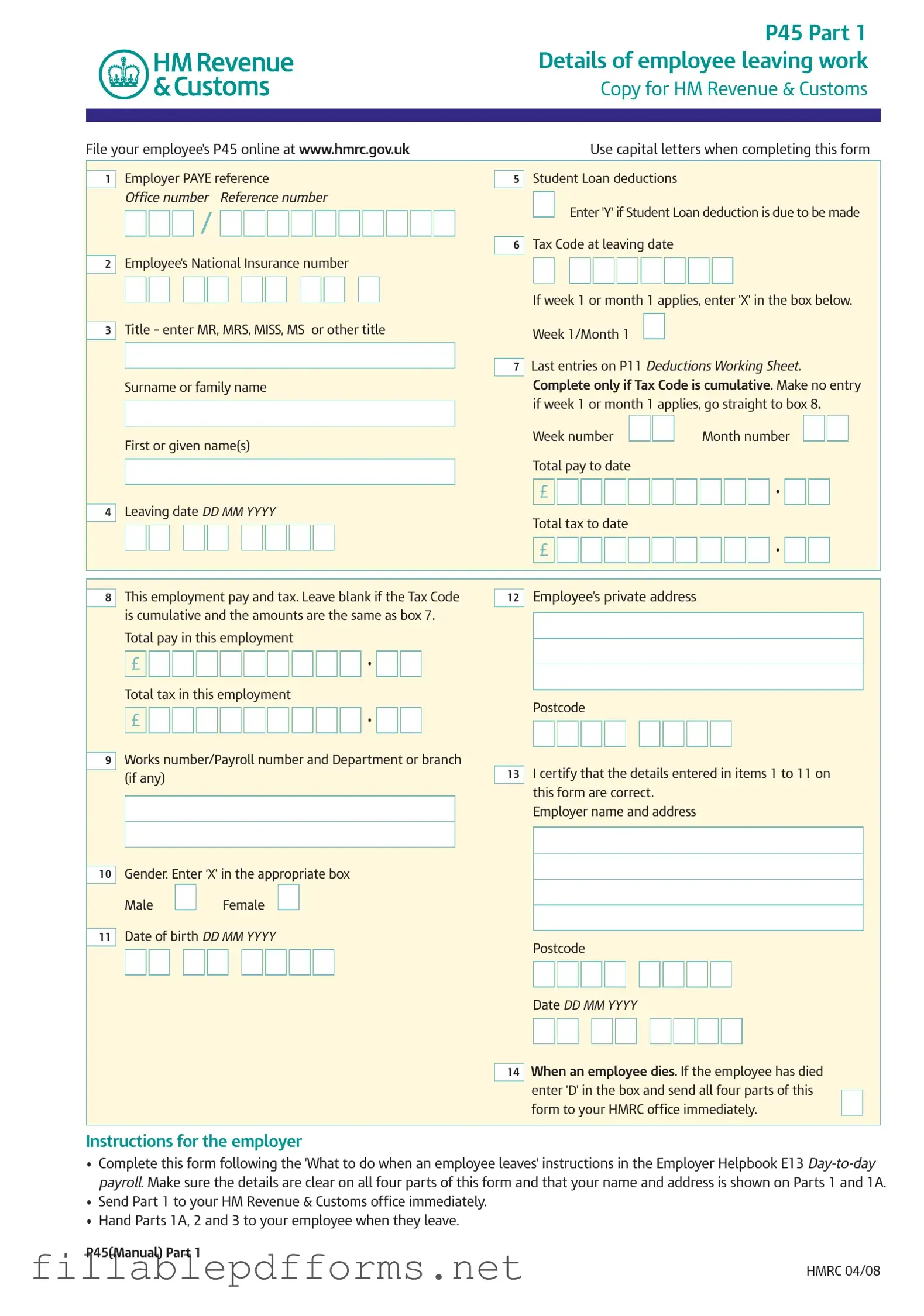The P45 form is an essential document for both employers and employees in the United Kingdom, particularly during transitions between jobs. This form is issued when an employee leaves their job, providing crucial information about their employment history, tax contributions, and National Insurance details. The P45 is divided into three parts: Part 1 is sent to HM Revenue & Customs (HMRC), while Parts 1A and 2 are given to the employee, and Part 3 is for the new employer. Each section requires specific information, including the employee's PAYE reference, National Insurance number, and details about any student loan deductions. Employees must keep their copy safe, as it is necessary for tax returns or when claiming benefits. The form also includes instructions for both the employer and the employee, ensuring that all parties understand their responsibilities. Accurate completion of the P45 is vital to avoid issues with tax codes and deductions in future employment. Understanding the P45 form is crucial for a smooth transition when changing jobs or navigating employment benefits.
